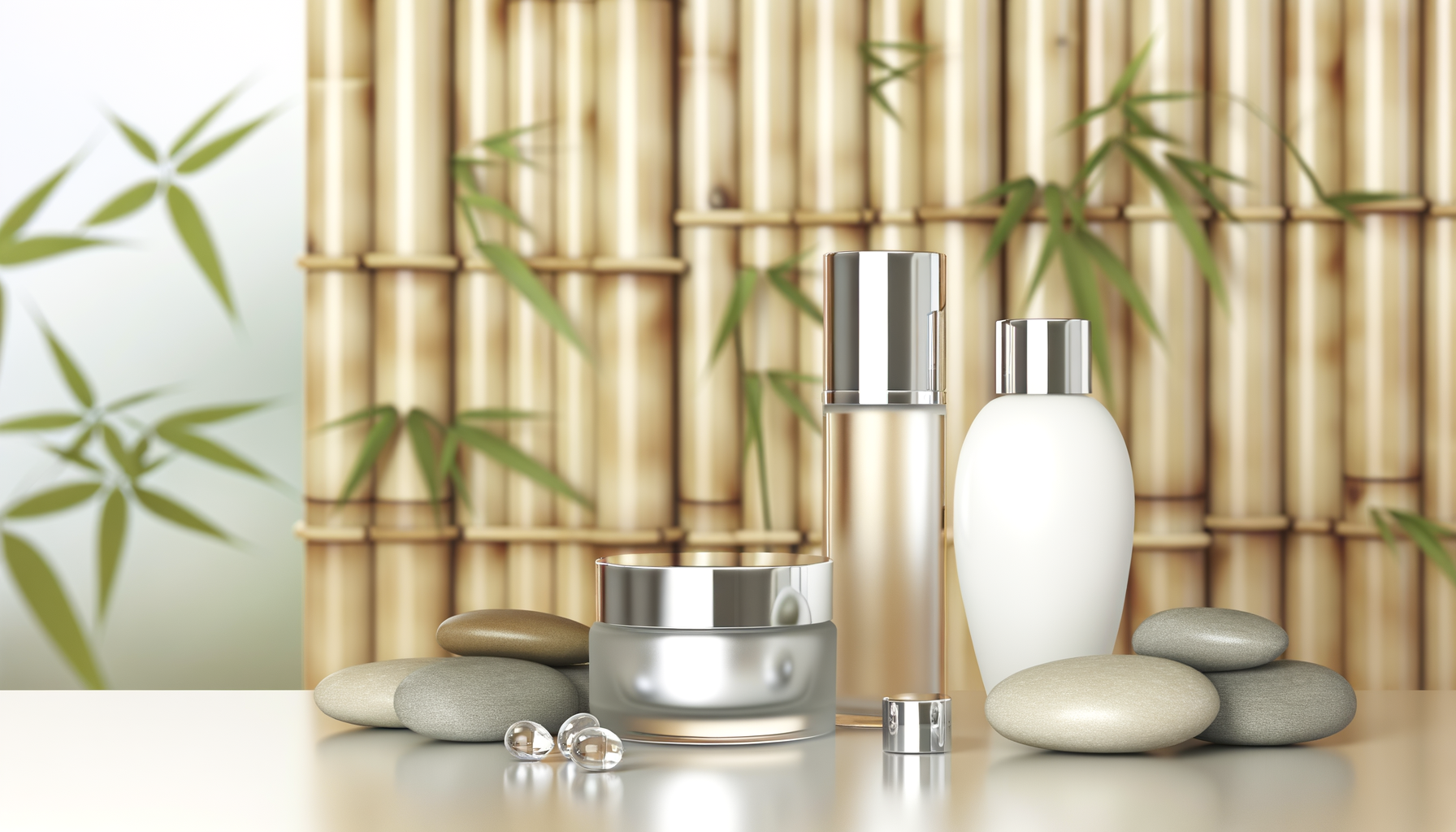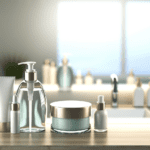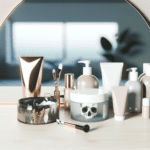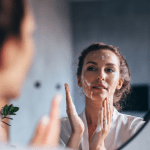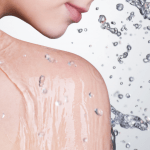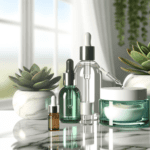Introduction to Nanosilver in Skincare
Defining Nanosilver and Its Use in Skincare Products
Nanosilver, often referred to as silver nanoparticles, is a form of silver that is measured to be less than 100 nanometers in at least one dimension. Due to their minuscule size, these particles possess unique properties that differ significantly from bulk silver, including enhanced optical, thermal, and antimicrobial characteristics. In the realm of skincare, nanosilver is incorporated into products for its antimicrobial spectrum, which is superior to that of larger silver particles. This has led to its use in a variety of skincare formulations, ranging from creams and lotions to serums and masks, with the intent of leveraging its ability to combat harmful microorganisms on the skin’s surface.
The Appeal of Nanosilver for Health-Conscious Consumers
For consumers who are vigilant about their health and skincare, nanosilver presents an attractive component in their regimen. Its antibacterial properties are particularly appealing, as they offer a means to preserve the integrity of skincare products by preventing bacterial contamination. Additionally, nanosilver is believed to aid in the treatment of skin conditions like atopic dermatitis and acne, due to its ability to disrupt bacterial cell walls. This has led to a surge in products marketed towards health-conscious individuals seeking alternative treatments for skin issues, as well as those looking for preservative qualities in their skincare.
Overview of Health Concerns and Regulatory Landscape
Despite the benefits, the use of nanosilver in skincare products is not without controversy. There are health concerns related to the potential for endocrine disruption, hormonal imbalances, and other health issues stemming from the nanoparticles’ ability to penetrate the skin and enter the bloodstream. The scientific community remains divided, with conflicting studies and a lack of consensus on the safety of dermal use of nanosilver. Regulatory bodies like the FDA have yet to establish firm guidelines, leading to a landscape where independent research and consumer advocacy play crucial roles in monitoring and reporting on the safety of nanosilver in skincare products. The regulatory perspective is thus a complex tapestry of evolving standards, ongoing research, and heightened consumer awareness.
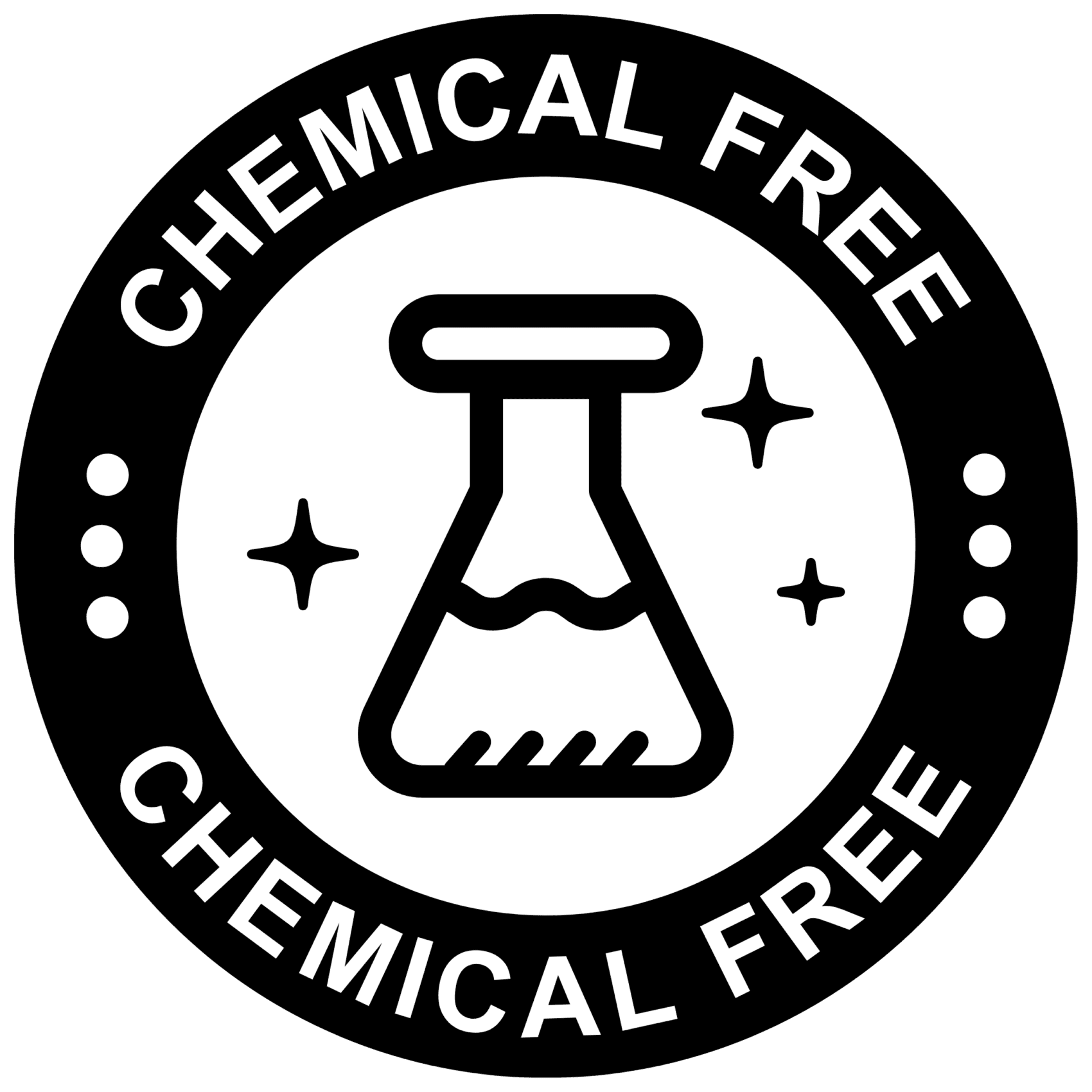
Doubting chemicals in skincare and femcare? Well done! Choose chemical-free products whenever possible.
The Science Behind Nanosilver
How Nanosilver Works at the Microscopic Level
Nanosilver, or silver nanoparticles, are silver particles between 1 and 100 nanometers in size. At this scale, silver exhibits unique physical and chemical properties that differ from bulk silver. These nanoparticles have a much larger surface area relative to their volume, which increases their contact with bacteria or fungi, enhancing their antimicrobial effects. When nanosilver particles come into contact with these microbes, they release silver ions. These ions can disrupt the cellular membrane, causing structural changes and leading to cell death. Additionally, silver ions can penetrate the cell, interfering with critical functions such as respiration and reproduction, ultimately leading to the cell’s demise.
Antimicrobial Properties and Skin Health Benefits
The antimicrobial properties of nanosilver stem from its ability to release silver ions, which are toxic to a wide range of microorganisms. These ions bind to bacterial cell walls and membranes, causing damage and leakage of cellular contents. Inside the cell, silver ions interact with thiol groups in enzymes and proteins, leading to inactivation and disruption of vital cellular processes. For skin health, this means that nanosilver can help in preventing or treating infections, particularly in wounds or burns. It can also be incorporated into skincare products to reduce the growth of bacteria that cause odor or skin conditions such as acne.
Comparison with Traditional Silver Uses in Medicine
Historically, silver has been used for its medicinal properties for centuries, with applications ranging from wound dressings to water purification. Traditional uses of silver in medicine typically involved larger particles or ionic silver. Nanosilver’s advantage over these traditional forms lies in its increased surface area, which enhances its antimicrobial activity and allows for a lower concentration of silver to be used effectively. Additionally, nanosilver’s small size enables it to be incorporated into a variety of materials and products, such as textiles and coatings, extending its protective benefits without altering the product’s characteristics.

Popular Read: Endocrine Disruptors in Skincare: What You Need to Know
Potential Health Risks of Nanosilver
Understanding the Concerns About Endocrine Disruption
The incorporation of nanosilver in skincare products has raised concerns about its potential to disrupt the endocrine system. Endocrine disruptors are chemicals that can interfere with hormone systems, leading to adverse developmental, reproductive, neurological, and immune effects. Nanosilver particles, due to their size, can easily penetrate biological membranes and may interact with cellular components, including hormone receptors, potentially leading to endocrine disruption.
Research on Nanosilver and Hormonal Imbalances
Research studies have begun to explore the relationship between nanosilver exposure and hormonal imbalances. Preliminary findings suggest that nanosilver can traverse into cells and accumulate in organs, including the brain, where they may induce neuronal degeneration and affect hormonal regulation. In vitro studies have shown that nanosilver can cause morphological changes in various cell lines, including those related to the endocrine system, and induce oxidative stress, which is known to affect hormonal balance. However, the exact mechanisms by which nanosilver may cause hormonal imbalances remain to be fully elucidated.
Links Between Nanosilver and Other Health Issues
Beyond endocrine disruption, nanosilver has been linked to other health issues. Its antimicrobial properties, while beneficial in controlling pathogens, may also inadvertently disrupt beneficial microflora on the skin and within the body. This disruption could have unforeseen consequences on health, including the development of antibiotic resistance. Additionally, studies have indicated that nanosilver can generate reactive oxygen species (ROS), which can attack DNA, proteins, and cell membranes, leading to cellular damage and apoptosis. The potential for nanosilver to cause pulmonary inflammation, systemic effects, and translocation to organs such as the liver, kidney, or brain is also a concern, particularly with routes of exposure like inhalation or ingestion. The size, shape, surface charge, and coating of nanosilver particles all influence their toxicity, and these factors must be considered when assessing the risks associated with their use in skincare products.
Given the emerging nature of research on nanosilver, it is imperative to approach its use in skincare with caution. Regulatory bodies, scientists, and healthcare professionals continue to scrutinize the safety profile of nanosilver to ensure consumer protection. As the scientific community works to understand the full implications of nanosilver exposure, consumers are encouraged to stay informed and consider the potential risks when choosing skincare products.

Do you have the most commonly used but toxic, disease bringing chemicals in your skin care? Many chemicals in skincare are hormone disruptors and make menopause symptoms worse.
Find out more…
Regulatory Perspective on Nanosilver in Skincare
Current FDA Stance and Guidelines
The U.S. Food and Drug Administration (FDA) has been cautious in its approach to nanosilver in skincare products. The agency recognizes the potential antimicrobial benefits of nanosilver but also expresses concerns about the lack of comprehensive data on its long-term health effects. The FDA has not established specific regulations for nanosilver in cosmetics, but it requires that all skincare products be safe for consumers under labeled or customary conditions of use. Manufacturers are responsible for ensuring product safety, which includes the use of nanosilver. The FDA also has the authority to take action against products that are found to be unsafe or misbranded.
International Regulations and Standards
Internationally, the regulatory landscape for nanosilver in skincare varies by region. The European Union (EU) has implemented more stringent regulations, requiring that all nanomaterials be explicitly listed in the ingredients and undergo a safety assessment before being used in cosmetic products. In contrast, other countries may have less comprehensive policies or are still in the process of developing specific guidelines for nanomaterials, including nanosilver. The lack of harmonized international standards poses challenges for global companies and underscores the need for more coordinated regulatory efforts.
The Role of Independent Research and Consumer Advocacy Groups
Independent research organizations and consumer advocacy groups play a crucial role in the ongoing dialogue about nanosilver’s safety in skincare. These entities often conduct their own studies to assess the risks and benefits of nanosilver, providing valuable data that can influence regulatory decisions. They also serve as watchdogs, holding manufacturers accountable for the safety of their products and pushing for transparency in ingredient disclosure. Consumer advocacy groups, in particular, are vocal in demanding clearer labeling practices and the right for consumers to make informed choices about the products they use on their skin.
In conclusion, while nanosilver offers promising benefits in skincare, its incorporation into products is met with significant health questions and a complex regulatory environment. The FDA, along with international bodies, is tasked with balancing the potential advantages of nanosilver against the uncertainties surrounding its long-term effects. Independent research and consumer advocacy groups contribute to this balance by providing additional scrutiny and advocating for consumer safety and knowledge.
Consumer Insights: Perceptions and Misconceptions
How Women 45+ View Nanosilver and Skincare
For women over the age of 45, skincare is often a priority, with a focus on products that promise anti-aging benefits and healthy skin maintenance. Nanosilver, with its antimicrobial properties, has caught the attention of this demographic. However, the perception of nanosilver in skincare varies. Some view it as a cutting-edge solution to keep skin free from bacteria and thus potentially reducing signs of aging and skin irritations. Others are cautious, concerned about the long-term effects of incorporating nanoparticles into their skincare routine. The lack of comprehensive information and conflicting reports on the safety of nanosilver contribute to this divided opinion.
Common Myths and Facts About Nanosilver Products
- Myth: Nanosilver is a completely new and untested technology in skincare.
Fact: While nanosilver is a relatively recent development in skincare, silver has been used for its medicinal properties for centuries. Nanosilver’s smaller particles are designed for more efficient use, but they are not without a history of research and application. - Myth: Nanosilver in skincare products is always safe and beneficial.
Fact: Although nanosilver has antimicrobial properties that can be beneficial, there is ongoing research into its safety. The size and concentration of nanoparticles, as well as the formulation of the product, can influence its effects on health. - Myth: All skincare products containing nanosilver are FDA-approved.
Fact: Not all products with nanosilver have been evaluated or approved by the FDA. It’s important for consumers to check the regulatory status of these products.
The Importance of Ingredient Transparency and Education
Ingredient transparency is crucial in the skincare industry, especially for products containing nanosilver. Consumers have the right to know what they are applying to their skin and the potential impacts on their health. Education about the benefits and risks associated with nanosilver is equally important. By providing clear, evidence-based information, skincare companies can help consumers make informed decisions. Additionally, understanding the role of nanotechnology in enhancing the bioefficacy of phytochemicals and other compounds can guide consumers towards products that are both effective and safe. With proper education, women over 45 can discern between marketing hype and scientifically-backed benefits, leading to better choices for their skin health.
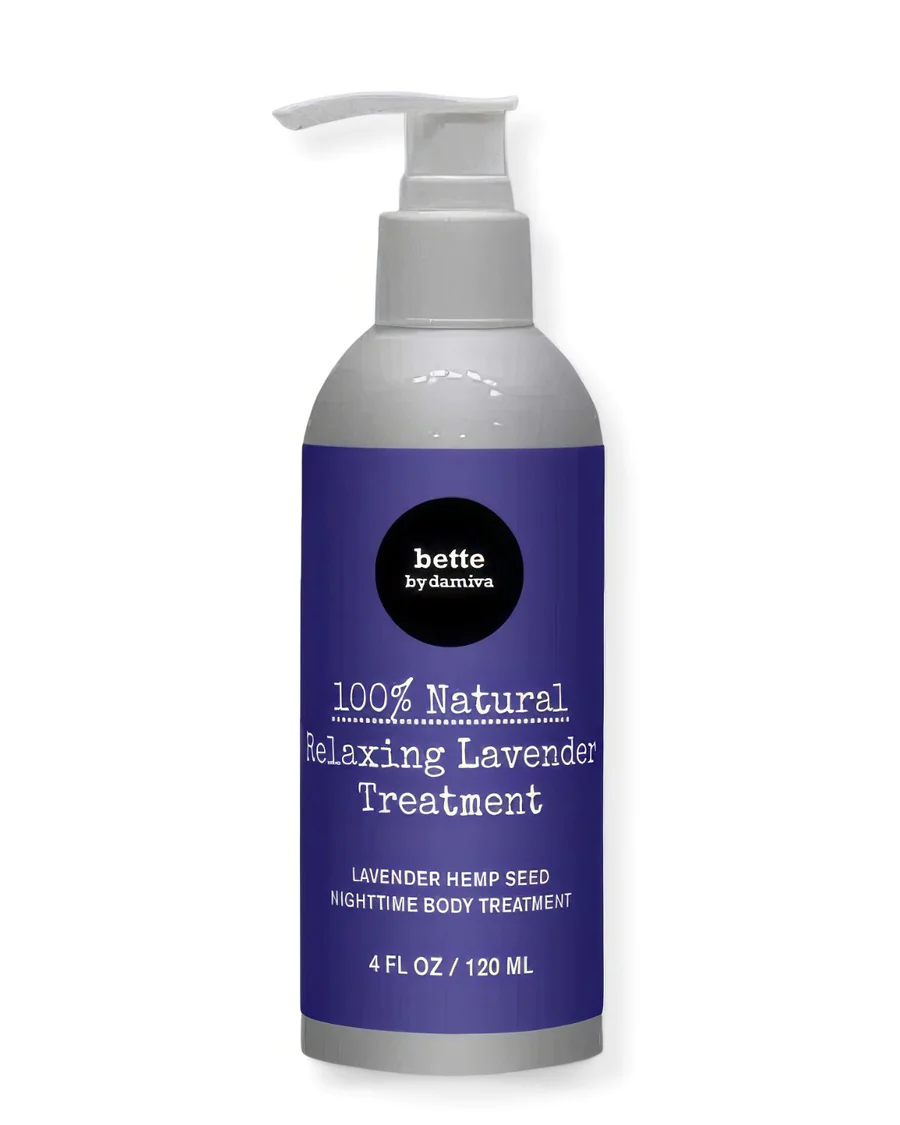
Bette 100% All-Natural Relaxing Lavender Body Lotion.
Chemical-Free
Your relaxing night time body moisturizer to leave the day’s stress behind. Decompress and wish your body good night with the calming scent of lavender.
Alternatives to Nanosilver in Skincare
Natural and Organic Skincare Options
The quest for safer skincare alternatives has led to a surge in the popularity of natural and organic products. These options often contain plant-based ingredients, such as aloe vera, tea tree oil, and chamomile, which have been used for centuries for their healing and soothing properties. Natural antioxidants, like vitamin C and E, are also commonly found in these products, offering protection against environmental damage without the potential risks associated with nanosilver. Additionally, organic skincare products are free from synthetic pesticides and fertilizers, reducing the exposure to harmful chemicals.
Holistic Approaches to Skin Health and Detoxification
Holistic skincare emphasizes the connection between overall health and skin condition. This approach advocates for a balanced diet rich in antioxidants, adequate hydration, and regular exercise to promote skin detoxification and vitality. Techniques such as dry brushing and lymphatic drainage massages are also part of holistic rituals, aiming to enhance blood circulation and toxin removal. By addressing skin health from multiple angles, holistic methods may reduce the need for products containing nanosilver and other synthetic compounds.
Evaluating the Efficacy and Safety of Alternative Ingredients
When considering alternatives to nanosilver, it is crucial to assess both the efficacy and safety of potential ingredients. Research into natural compounds with antimicrobial properties, such as honey and essential oils, has shown promise. However, it is important to note that natural does not always mean safe; some natural ingredients can be allergens or irritants. Therefore, thorough testing and clinical trials are necessary to ensure that these alternatives do not pose health risks and are effective in maintaining skin health.
Do you know the three main ways that your body gets in touch with harmful chemicals with everyday products? Knowledge is Power!
The Ultimate Detox Guide will tell you how to lower your exposure to harmful chemicals!

Guidance for a Chemical-Free Lifestyle
Strategies for Avoiding Toxins in Daily Life
Minimizing exposure to harmful chemicals is crucial for maintaining health and wellness. To reduce the presence of toxins in your daily life, consider the following strategies:
- Choose Organic Food: Opt for organic foods to avoid pesticides and herbicides. Look for certified organic labels when shopping for groceries.
- Use Natural Cleaning Products: Replace conventional cleaning agents with natural alternatives like vinegar, baking soda, and essential oils.
- Avoid Plastic: Minimize the use of plastic containers, especially for food storage and heating, to reduce exposure to endocrine disruptors like BPA.
- Filter Water: Use a high-quality water filter to remove potential contaminants from your drinking water.
- Ventilate Your Home: Ensure proper ventilation to reduce indoor air pollutants from furniture, carpets, and paint.
Tips for Selecting Safe Skincare Products
When it comes to skincare, the ingredients matter. To select safe products:
- Read Labels: Familiarize yourself with harmful ingredients and check product labels before purchasing.
- Choose Water-free: Products without water (aqua, eau, juice) can be made without chemical preservatives (water is a breeding ground for bacteria, mold and microbes, which means that water-based lotions, creams, balms etc. contain chemical preservatives)
- Choose Simplicity: Products with fewer ingredients are often safer. Look for items with natural components that you recognize.
- Patch Test: Always perform a patch test with new skincare products to check for adverse reactions.
- Research Brands: Support companies that are transparent about their formulations and committed to non-toxic ingredients.
- Consult EWG’s Skin Deep Database: Use resources like the Environmental Working Group’s Skin Deep database to check the safety ratings of cosmetics and personal care products.
Resources for Continued Learning and Advocacy
Staying informed and advocating for safer products is a continuous process. Utilize the following resources to further your knowledge and contribute to change:
- Scientific Literature: Read up-to-date scientific studies on the effects of chemicals like nanosilver to understand the latest research findings.
- Community Groups: Join local or online communities focused on environmental health and chemical-free living for support and collective advocacy.
- Governmental Agencies: Follow updates from agencies like the FDA and EPA for regulatory changes and safety guidelines.
- Workshops and Seminars: Attend events that educate on chemical-free living and provide practical advice for everyday choices.
By adopting these strategies, tips, and resources, you can navigate towards a healthier, chemical-free lifestyle and contribute to the demand for safer consumer products.
